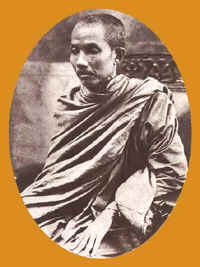Dhammasala is part of the Dhammayut or ‘Thai Forest’ lineage of Theravada Buddhism.
Dhammayuttika Nikaya (Thai: Thammayut) began in 1833 as a reform movement led by Mongkut (later King Rama IV), son of King Rama II of Siam. It remained a reform movement until passage of the Sangha Act of 1902, which formally recognized it as the lesser of Thailand’s two Theravada denominations, the other being Maha Nikaya.[2]
Prince Mongkut was a bhikkhu (religious name: Vajirañāṇo) for 27 years (1824–1851) before becoming King of Thailand (1851–1868). The then 20 year-old prince entered monastic life in 1824. Over the course of his early meditation training, Mongkut was frustrated that his teachers could not relate the meditation techniques they were teaching to the original teachings of the Buddha. Also, he described what he saw as serious discrepancies between the vinaya (monastic rules) and the actual practices of Thai bhikkhus. Mongkut, concerned that the ordination lines in Thailand were broken by a lack of adherence to this monastic code, sought out a different lineage of bhikkhus with practice that is more in line with the vinaya.
There are several rules in the Theravada monastic code by which a bhikkhu is “defeated” – he is no longer a bhikkhu even if he continues to wear robes and is treated as one. Every ordination ceremony in Theravada Buddhism is performed by ten bhikkhus to guard against the possibility of the ordination being rendered invalid by having a “defeated bhikkhu” as preceptor. Despite this, Mongkut was concerned that the area’s lineages of regional traditions were broken. He made every effort to commission a phalanx of bhikkhus in Thailand with the highest probability of an unbroken lineage traceable back to the Buddha.[3]
Mongkut eventually found a lineage among the Mon people in Thailand who had a stronger practice. He reordained in this group and began a reform movement that would become the Thammayut order. In founding the Thammayut order, Mongkut made an effort to remove all non-Buddhist, folk religious, and superstitious elements which over the years had become part of Thai Buddhism. Additionally, Thammayut bhikkhus are expected to eat only one meal a day (not two) and the meal was to be gathered during a traditional alms round.[4]
Since his brother Rama III complained about his involvement with an ethnic minority (the Mon), a monastery was built for Prince Mongkut on the edge of the city of Bangkok.[5][non-primary source needed] In 1836, Mongkut became the first abbot of the new Wat Bowonniwet Vihara, and it would become the administrative center of the Thammayut order to the present day.[3]
Soon after, Mongkut had other bhikkhus who were close to him reordain in this lineage of Mon bhikkhus. Among these were Mongkut’s son Vajirañāṇavarorasa and Somdet Phra Wannarat “Thap”, a grade nine Pali scholar.[6]
According to anthropologist Jim Taylor, Vajirañāṇavarorasa’s autobiography tells how “Thap had differences with the somewhat more “worldly” bhikkhus at Wat Bowornniwet, which led to dissension and the movement’s eventual division into four primary competing factions (monastic lines or “stems”).” In the mid-19th century these branches became so estranged that each one developed its own style of chanting, interpretation, and translation of Pali texts, and differed on issues related to the monastic code.[7]
It wasn’t until Vajirañāṇavarorasa took control of a new phase of sangha reforms in 1892 that the administrative Thammayut hierarchy would begin to form a cohesive vision. Officially Pusso Saa was the sangharaja; however, he was only a figurehead.[8][7] Thanissaro, a Thai-ordained forest bhikkhu, notes though that in the early-20th century, Ajahn Mun’s kammaṭṭhāna lineage formed a distinct camp within the Thammayut order which was at odds with Vajirañāṇavarorasa’s reforms.[5]

